Recessed Doors
Posted on - Saturday, May 24th, 2014The original ADA Design Guidelines published in 1991 did not allow recessed doors. That meant that if you had a thick wall and a door installed within it, it would not be considered accessible. The reason was because a person with disabilities who use wheelchairs might not be able to reach the door handle if it was recessed.
The 2010 ADA Standards for Accessible design, added provisions for recessed doors. This newsletter will explain when they are allowed and when they are not.
The Basics
The Standards states the following about recessed doors:
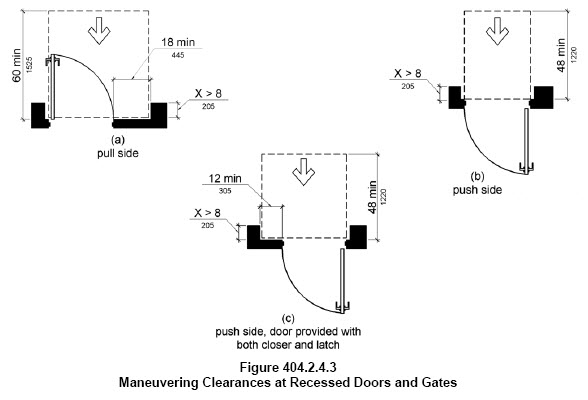
In a nutshell, what this is saying is that the 18″ minimum clearance required at the pull side of the door, or the 12″ on the push side of a door with a closer and a latch is not required if the door is recessed no more than 8″. You can use the face of the wall as part of the maneuvering clearance.
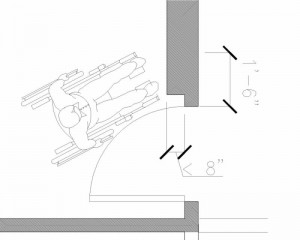
If on the other hand, the recess is larger than 8″, then you have to provide the additional 18″ on the pull side (for example)
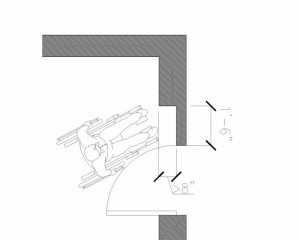
The US Access Board has come up with some animated guidelines that are pretty good. One of the is all about door maneuvering (including recessed doors). Here is the link. I recommend them.
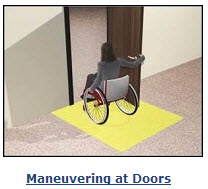
Tricky situations
Sometimes in small spaces, doors might have objects within their floor space. The recess door section allows for objects, such as grab bars, to be located within the maneuvering clearance at the door as long as it is not more than 8″ deep. The section’s advisory explains that these objects could be considered a “recess” and are allowed to be within the maneuvering clearance.
Advisory 404.2.4.3 Recessed Doors and Gates. A door can be recessed due to wall thickness or because of the placement of casework and other fixed elements adjacent to the doorway. This provision must be applied wherever doors are recessed.
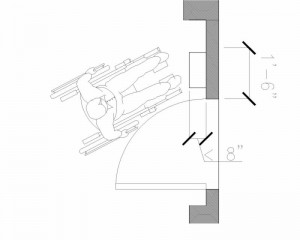
This figure shows an object that is less than 8″ deep next to the latch side of the door. This would be considered a recessed door due to the object and the face of the object would be allowed to be used as the maneuvering clearance
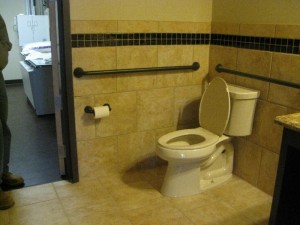
The grab bar in the photo above is in the way of the maneuvering clearance of the door at the latch side. But because it is less than 8″ deep, it will allowed per the recess door section.
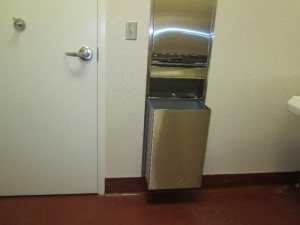
This trash receptacle is less than 8″ deep and therefore is creating a recessed door condition. The 18″ on the pull side can be taken from the face of the trash can.*
*Even though the advisory states that an object within the maneuvering clearance can be considered a recess, there are some jurisdictions that don’t allow any object within the maneuvering clearance of the door and do not consider it a recessed door. Check with your regulating agency for their ruling.
More Information
We are celebrating our 10th year of service to the building industry as a Registered Accessibility Specialist! Mention this newsletter and receive 10% off your next review or inspection.
If you want to learn more about these standards, be sure to check out my books:
“Applying the ADA” published by Wiley.
They are available for sale now. (also available as an e-book)
If you have any questions about these or any other topics, please feel free to contact me anytime.
Marcela Abadi Rhoads, RAS #240
Abadi Accessibility
214. 403.8714
marhoads@abadiaccess.com
www.abadiaccess.com
 Abadi
Abadi 


